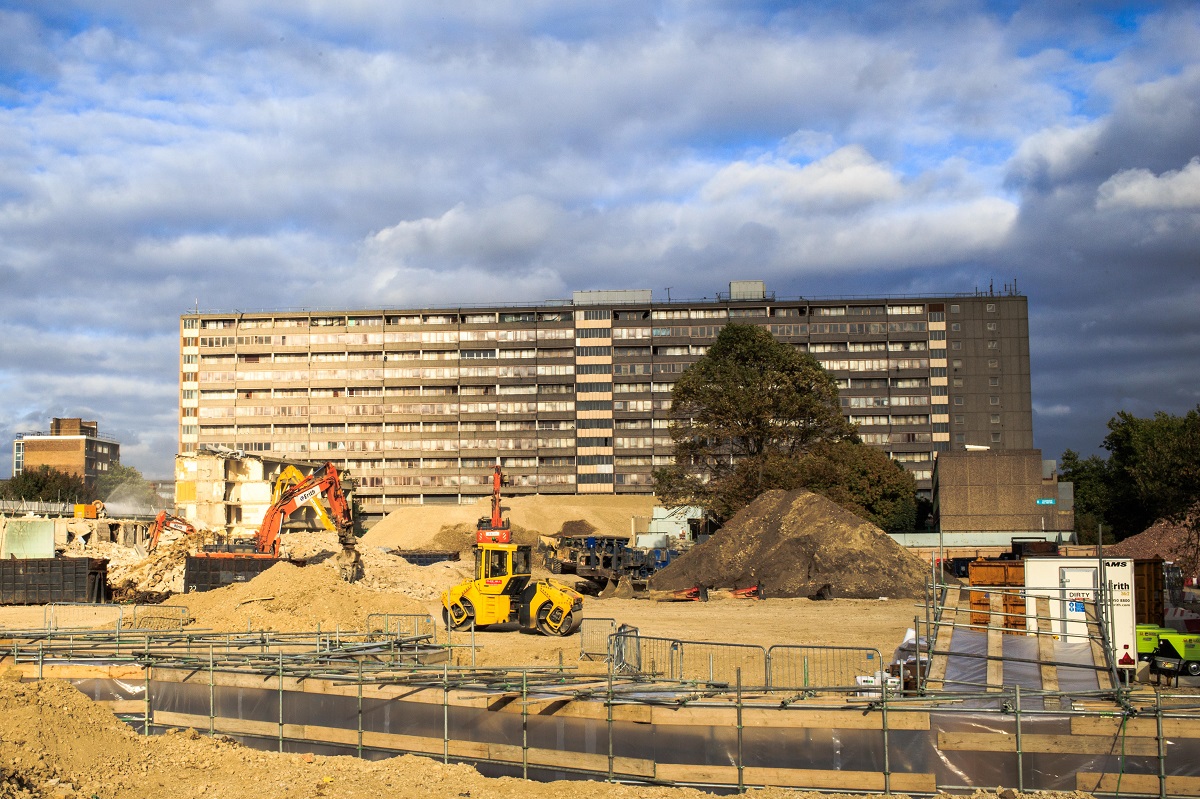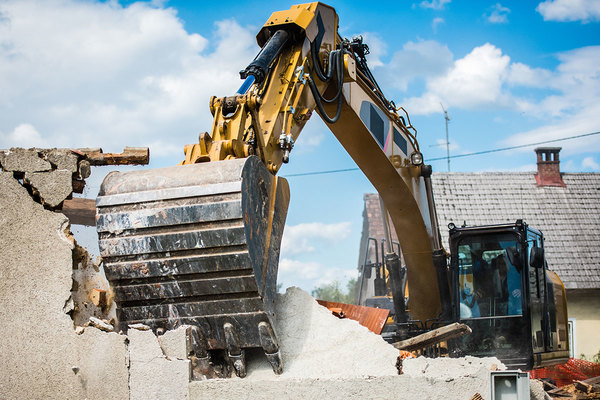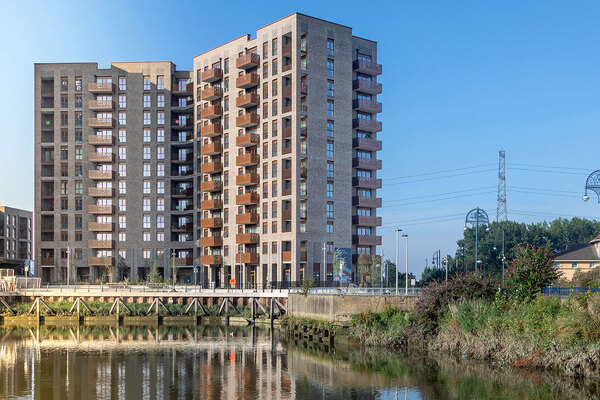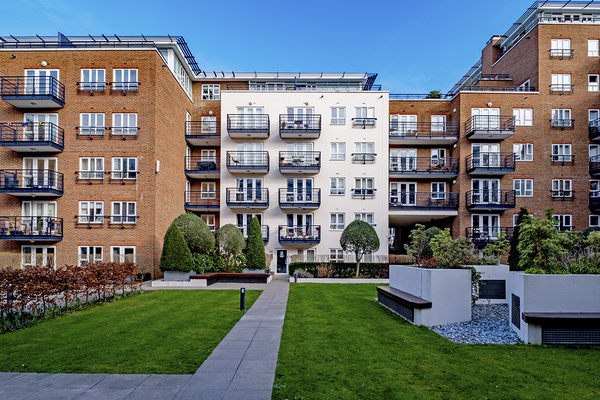You are viewing 1 of your 1 free articles
Profit motives not residents’ interests drove estate regeneration project, academic report says
An academic report studying an estate regeneration scheme in east London has concluded the process was “motivated by profit” rather than the interests of residents.
Researchers from the University of Manchester collected views from residents of the Robin Hood Gardens Estate in east London, arguing that their voices were “almost entirely absent from the public debate about the estate’s merits, failings, and impending demolition”.
The estate was opened in 1972 and was partially demolished in 2017, with the eastern block still to be demolished.
Dr Nick Thoburn, reader in sociology, claimed that central and local governments, housing associations and developers often justify demolition with the argument that “residents share the dominant mood and opinion about council estates”. However, he wrote, his research at Robin Hood Gardens “found this not to be the case”.
Estate regeneration has been a highly contentious area of housing policy in the 21st century, with its advocates arguing that it provides more housing and is the only way to deal with some badly built blocks from the post-war period.
But campaigners have long argued that it can price lower-income households out, break up communities, take too long to come to fruition and contribute to carbon emissions.
Dr Thoburn concluded that the residents “despaired of the lack of investment in and maintenance of the estate” and criticised the way councils leveraged long-term neglect and disinvestment for demolition. One resident described the process as “social cleansing”, he wrote.
“Views of the estate’s future were complex, sometimes coloured by the seeming inevitability of demolition that is produced by managed decline,” he noted. “But in the main, residents wanted refurbishment not demolition, in an estate whose architecture and homes were tremendously popular.”
Dr Thoburn argued that “demolition brings about social and individual cost, uprooting residents from support networks and jobs, fragmenting communities, and reducing the supply of affordable, safe, and secure housing”.
He also warned that demolition has an environmental impact which is “hidden behind claims that net zero carbon targets will be achieved through ‘green’ replacement housing”.
A 2008 paper in Energy Policy found that it can take around 40 years to “pay back” the carbon losses of demolition through energy saving in efficient new homes.
Based on Dr Thoburn’s findings, the report suggested that repair, refurbishment and retrofit of existing housing should be “the gold standard”.
By contrast, “demolition should not be the favoured option but the very last resort, an option institutionally disapproved of for its damaging impact on residents, communities, and the environment, and used only when buildings are proven to be structurally unsound”.
The report also argues that “residents should be consulted meaningfully and fairly”.
The Greater London Authority has required a formal ballot of residents for any redevelopment proposal involving whole or partial estate demolition since 2018, which Dr Thoburn said “should be extended to all parts of the country”, adding that the ballot process “must be overhauled”.
By contrast, a 2019 report by the London School of Economics found that Home Group’s regeneration of its Rayner’s Lane Estate “has produced very significant benefits” to residents and the wider community and Home Group’s investment was “highly valued by residents”.
The demolition of the Robin Hood Gardens Estate was a controversial project, which attracted a national campaign to prevent its demolition – with a group of architects failing in their bid to have the buildings listed by Historic England.
The 213-home estate was built in 1972, designed by architects Alison and Peter Smithson. Swan Housing Group was leading the work to demolish the estate and build around 900 homes in three phases.
The second phase – which involves building 268 homes, 99 of which are for social rent and 15 for shared ownership – is under way with the third phase yet to begin. The first phase saw 340 new homes built.
The regeneration scheme is 50% affordable by habitable room, according to Swan.
Swan recently merged with Sanctuary Housing Group after serious financial difficulties due to its over-exposure to development risk.
Sanctuary declined to comment, saying the project was a Swan scheme.
Sign up for our development and finance newsletter
Already have an account? Click here to manage your newsletters












